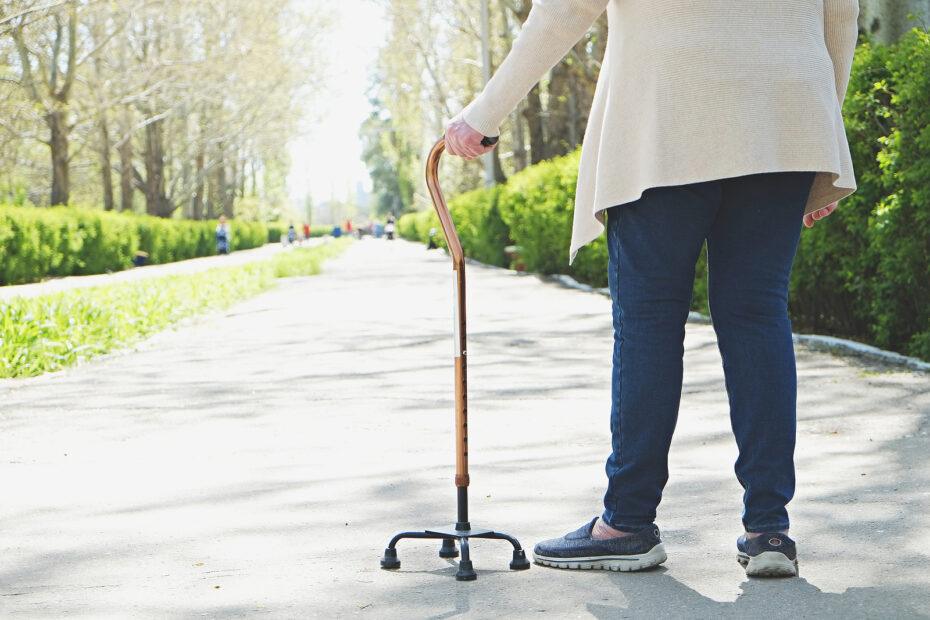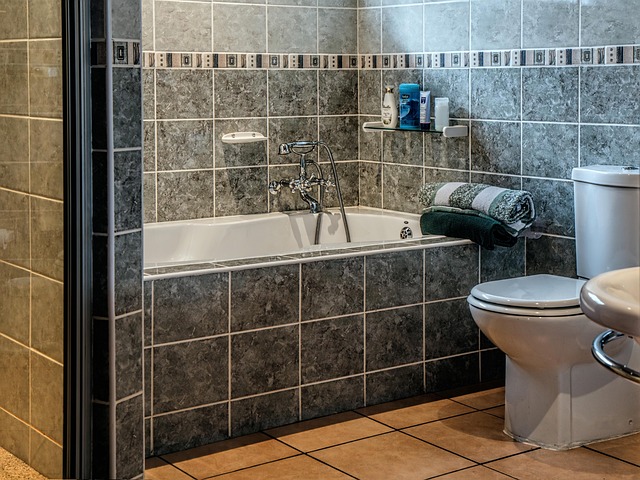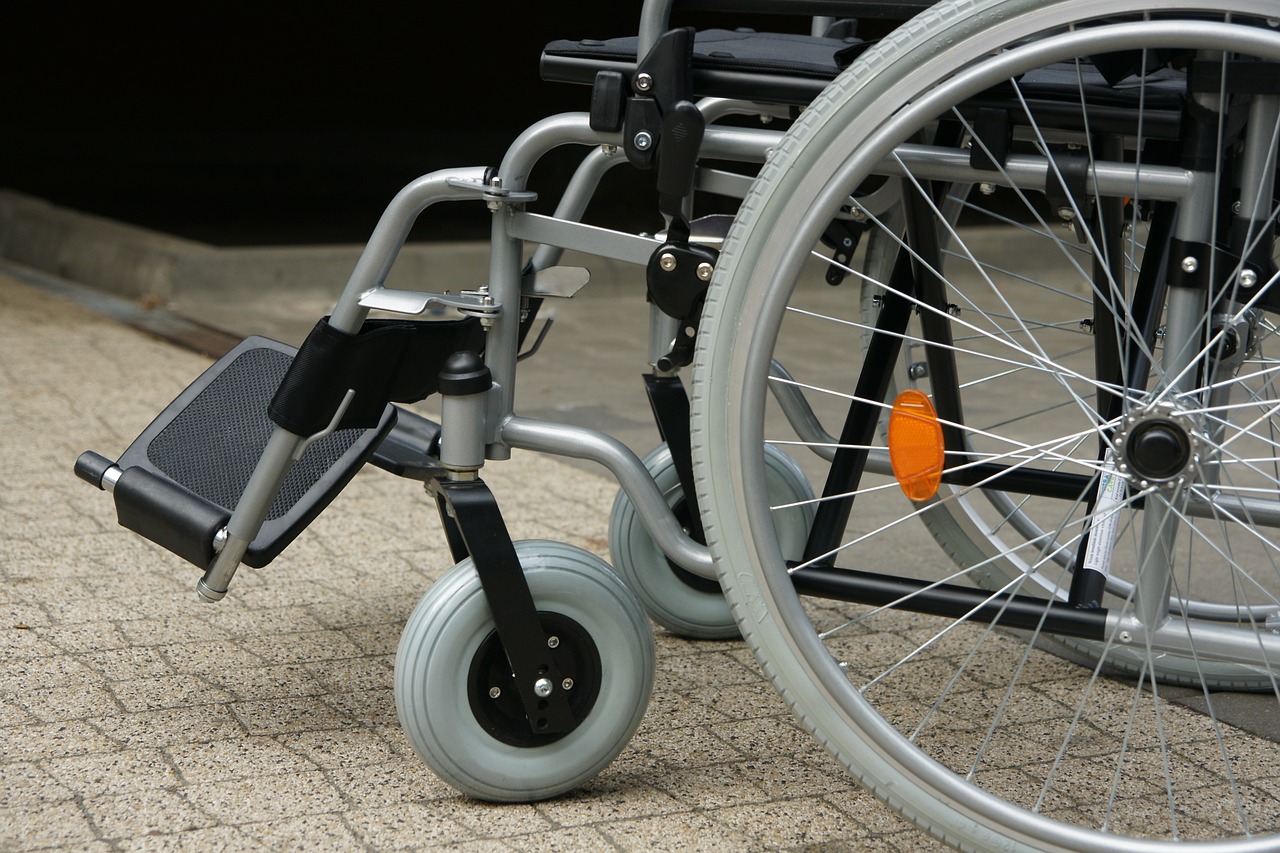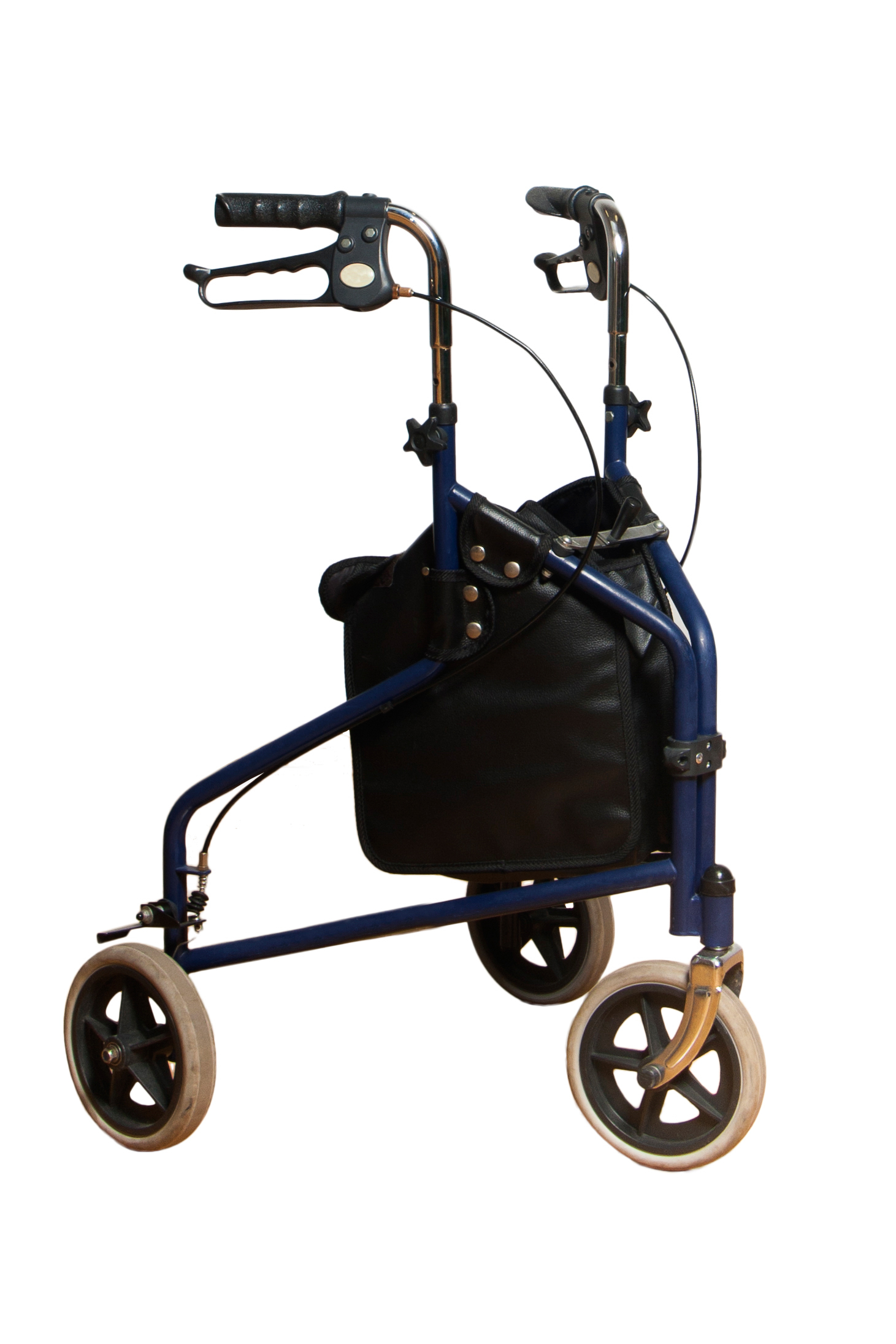Quad canes are a popular choice for seniors looking to improve safety while walking and when used properly, they can improve stability and reduce fall risk.
But the key is using them properly.
Unfortunately, I see patients using quad canes incorrectly all the time, negating a lot of the fall-reducing perks they offer in the first place.
And if you aren’t going to use a quad cane correctly, you’re probably better off with a traditional single point cane… but I’m getting ahead of myself here.
In this guide, we’ll cover everything you need to know about using these canes the right way, but we’ll also discuss how to choose between a quad cane and a single point cane.
After reading, you’ll be able to use a quad cane like a pro (or decide this isn’t the right cane for you after all).
What’s a Quad Cane?
But first, we need to make sure we’re all talking about the same thing here.
A quad cane is a type of walking aid with four small feet at the base.
These feet offer a broader base of support, making the cane more stable than a traditional single-point cane.
This allows the user to put more weight through the cane, something that comes in handy for folks that need more support, but may not be able to use a walker.
If I remember correctly, I believe quad canes were created originally for people who had experienced a stroke and lost use of one of their arms (so they couldn’t grip a traditional walker)… but don’t quote me on that.
Either way, quad canes today are still designed to offer more support for folks who need it to safely walk.
Small-Base vs Large-Base Quad Canes
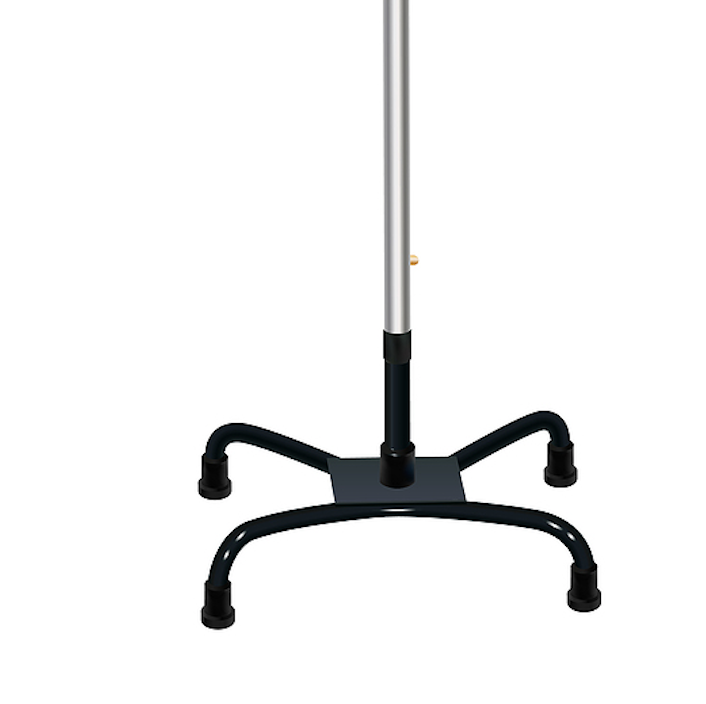
These days, there are all kinds of quad canes to choose from, but traditionally, these canes came as either “small-base” or “large-base”.
And as you probably guessed, these names simply refer to the size of the base at the bottom.
Both style have four points of contact (or feet), but the large-base quad cane comes with a larger separation of the feet.
And the small-base options come with smaller distances between the feet.
Small-base canes are lighter and easier to handle, while large-base canes are heavier, but provide more stability.
The shapes and sizes of these bases with vary greatly from brand to brand and some will offer bases that pivot to “make the cane more reliable on all terrains”… but I’m not a big fan of the pivoting base.
Personally, I think it makes the cane less stable and can actually increase fall risk in some seniors, but to each their own.
How to Properly Adjust a Quad Cane
Adjusting a quad cane is identical to adjusting a single point cane (or most any other type of can for that matter):
- Stand tall with your hand down by your side and place the cane beside your leg.
- When standing straight, the handle of the cane should align with the crease of your wrist.
- Your arm should have a slight bend (15-20 degrees) at the elbow when holding the cane.
You can also try adjusting the handle of the cane so that it lines up with the pointy, bony part of your hip (greater trochanter) – this usually works pretty well too.
Choosing the Correct Hand
Despite what you see on tv, most seniors will benefit from using the cane in the hand opposite of the weaker or injured leg.
In other words, we should be holding the cane on our strong side.
This may sound counter-intuitive, but placing the cane in the opposite hand does a few beneficial things.
For starters, it allows you to take weight off the weaker leg, making that leg’s job during ambulation easier.
It also allows the cane to better support the weaker leg during each step and promote improved balance.
If you don’t have a weaker or injured leg, you can choose which hand to hold the quad cane in – but most seniors will likely want to hold it in their dominant hand.
FYI, if your quad cane’s base has a flat side and a side where the two legs flay out, you’ll want to adjust the base so that the flayed out section is going out away from your body. This puts the straight end closest to your body.
Most quad canes allow you to adjust the base like this, allowing you to use them in either hand.
How to Walk with a Quad Cane Correctly
From a standing position, with the cane in the correct hand:
- Place the quad cane about one foot ahead of you, ensuring all four feet are stable on the ground.
- Step forward with your weaker leg, moving it in line with the cane.
- Move your stronger leg forward to meet or pass the weaker leg.
- Repeat these steps, maintaining a steady rhythm.
In other words, the cane and the opposite leg (your weaker leg) should progress forward at the same time.
While you’re still learning, you may want to slow things down and move the cane forward first, followed by the opposite leg.
But ultimately, the goal is to sequence so that the cane and opposite leg are moving at the same time, with the other leg stepping through completely.
Here’s a great video demonstrating how this looks when done correctly:
Navigating Stairs with A Quad Cane
One of the nice things about quad canes is that they can be used on stairs, unlike walkers.
When going up stairs:
- Lead with the stronger leg first, followed by the weaker leg and cane.
- If you have a handrail, feel free to hold onto the rail with your available hand.
- If you only have one handrail and it’s one the same side you would normally hold the cane, it’s ok to switch the cane to the stronger side and use the handrail on the weaker side.
When going down the stairs:
- Lead with the quad cane and the weaker leg first, followed by the stronger leg.
- If you have a handrail, feel free to hold onto it with your available hand.
- Continue descending the stairs one step at a time until you reach the bottom.
We learned this saying in PT school and I still teach it to my patients to help them remember which leg goes first when going up or down the stairs:
The good go to heaven and the bad go to he**.
Keep that in mind and you’ll always remember that the “good” leg goes first when going up stairs and the “bad” leg goes first when going down stairs.
Common Mistakes to Avoid When Using a Quad Cane
Here’s a quick rundown on the most common mistakes I see when seniors are using a quad cane:
- Cane too high or too short – make sure the cane is adjusted correctly because a poorly adjusted cane can cause discomfort or increase fall risk.
- Holding the Cane on the Wrong Side – hold the cane in the hand opposite the weaker side to maximize balance and support.
- Not planting all 4 tips on the floor – this is a big one and I see folks “galloping” quad canes or not placing all 4 points down at once all the time. In order for a quad cane to provide optimal stability, all 4 points need to land on the ground at the same time.
- Leaning Heavily on the Cane – the cane is for balance, not a full weight-bearing device. Excessive leaning can lead to imbalance or falls.
- Walking Too Fast – take slow, controlled steps, ensuring all four feet of the quad cane are stable before shifting weight.
Benefits of Using a Quad Cane
Here are some of the top benefits seniors can expect from using a quad cane:
- Increased Stability: The four-point base provides a wider area of support, reducing the risk of falls when used correctly.
- Improved Confidence: Using a quad cane can make seniors feel more secure, encouraging regular movement and exercise.
- Stands up by Itself: A common reason I see seniors choosing to use a quad cane over a single point cane is the simple fact that a quad cane will stand up by itself where ever you place it. I get it, the convenience is nice, but this alone shouldn’t be a reason to choose a quad cane.
Disadvantages of Using a Quad Cane
And here are some of the top disadvantages seniors can expect from these devices:
- Harder to Use: It takes more focus to place all 4 points on the ground at the same time with each step, making quad canes a little more challenging to master.
- Slower: Planting all 4 points down correctly with each step also slows you down. The added stability is great for seniors who need it, but more mobile seniors may prefer the speed a single point cane allows.
- Heavier: Quad canes are quite a bit heavier than single point canes, making them a little harder to carry and manage.
Contraindications for Using a Quad Cane
Not all seniors are suited for using a quad cane. Here are a few considerations to make before deciding on one of these devices:
- Severe Weakness: If there’s significant muscle weakness on both sides, a walker might be more appropriate.
- Balance Issues: Severe balance problems may require a different mobility aid.
- Upper Body Strength Limitations: Those with weak arms might struggle to handle the cane properly.
- Post-Surgical Recovery: Check with a healthcare provider if recovering from surgery to determine if a quad cane is suitable.
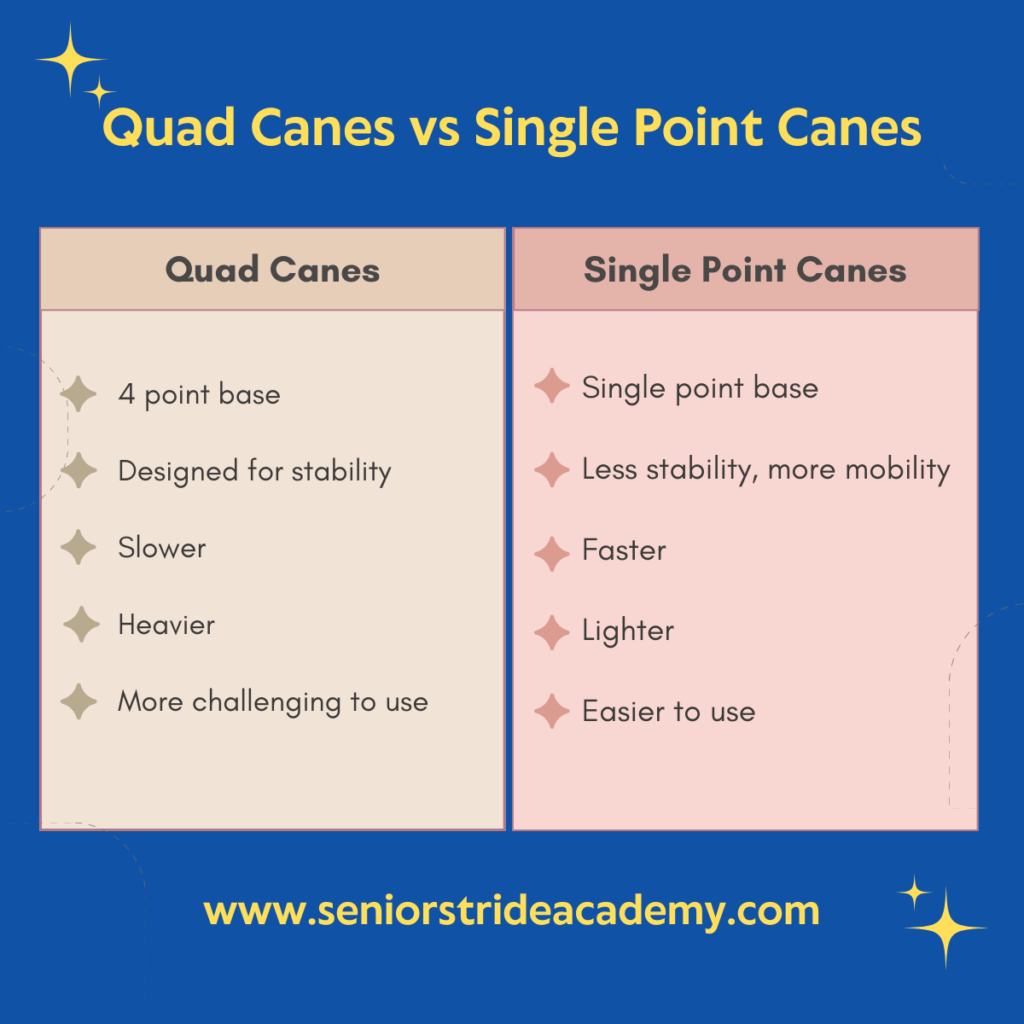
Quad Canes vs Single Point Canes
Choosing between a quad cane and a single-point cane depends on a senior’s specific needs, balance, and comfort.
Here’s a quick comparison to help you make an informed decision.
Stability
- Quad Cane: Offers four points of contact with the ground, providing a much wider base of support and greater stability. It’s ideal for those who need significant help with balance.
- Single-Point Cane: Has a single tip that contacts the ground, offering less stability but more flexibility. It’s better for those with minor balance issues.
Weight
- Quad Cane: Heavier due to the wider base, which can be challenging for some to handle, especially when navigating stairs.
- Single-Point Cane: Lighter and easier to maneuver, making it suitable for those who don’t require extensive support.
Use in Tight Spaces
- Quad Cane: Can be bulkier, making it harder to use in tight areas or small rooms.
- Single-Point Cane: Slim and easy to maneuver in confined spaces, making it practical for everyday indoor use.
Ease of Use
- Quad Cane: A little more challenging to use since all 4 points need to hit the ground at the same time. Using it correctly often reduces walking speed.
- Single-Point Cane: Quite a bit easier to use since only a single point needs to hit the ground with each step. Seniors can walk at comfortable speeds easily with a single point cane.
Choosing the right cane depends on the user’s mobility needs and lifestyle – seniors who require more stability due to severe balance/mobility issues may benefit from a quad cane.
That said, I find myself recommending single point canes to a lot more of my patients, mostly due to the fact that quad canes are bulky and most folks have a hard time using them correctly.
When in doubt, a healthcare professional can help make the best decision based on individual circumstances.
Final Thoughts
I’m going to be completely honest – I don’t particularly like quad canes.
Sure, they have their place and can be great assistive devices for the folks who truly need them and take the time to use them correctly.
But I find a lot of seniors that use them would benefit more from a single point cane.
If you are going to use a quad cane, please make sure you’re using it correctly.
Check your height adjustment and make sure you’re using it in the correct hand – and most importantly, make sure all 4 points are hitting the ground at the same time!
Remember, quad canes only provide more stability if they’re used correctly!
If you or a loved one is still not sure how to use one of these canes correctly, please check with a local physical therapist for extra guidance.
